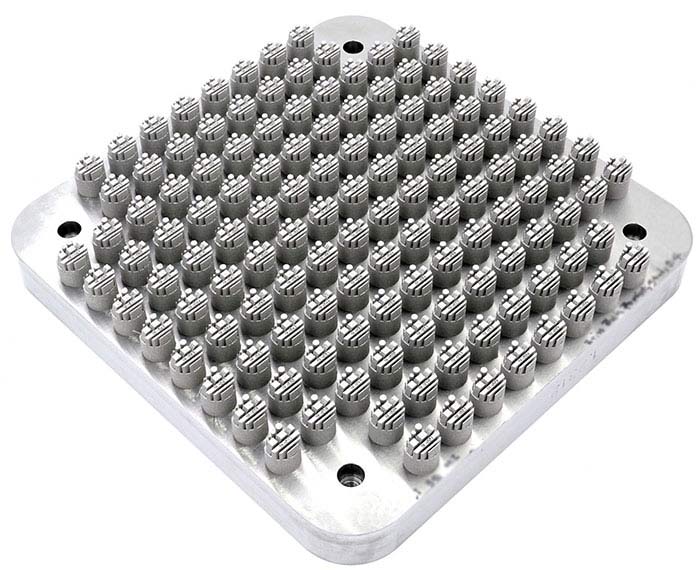
ZEISS, ORNL Develop Same-day Qualification Service for Print Parameters

An additive manufacturing sample on a build plate. The new rapid parameter qualification solution from ZEISS and ORNL, introduced at RAPID + TCT 2021 and developed for this purpose, could make it easier to produce defect-free parts during additive manufacturing Courtesy of ZEISS Group.
ZEISS and Oak Ridge National Laboratory (ORNL) have partnered to create ZEISS ParAM (Parameter for Additive Manufacturing), an automated print parameter qualification solution that can evaluate a set of parameters in less than 12 hours.
“Our goal is for the user to start with a design of experiments, print coupons, and evaluate best print parameters from the design of experiments plan in the same day, so they are ready to print parts the next morning,” said Pradeep Bhattad, product manager for ZEISS ParAM.
With its flexible test design and evaluation workflow capabilities, ZEISS ParAM is versatile enough to use for multiple applications. It can be used to evaluate parameters for printing defect-free parts with a change in powder quality or a degree of recycling; to develop print parameters for thicker powder layers; to qualify a build envelope; or to evaluate, or compensate for, a laser performance in multi-laser systems.
It also can be used to create a parameter for printing deformation-free parts.
The ZEISS ParAM printing parameters can be used singly or in combination to optimize the additive manufacturing process. According to its developers, the rapid print parameter qualification solution will reduce cost per part and will help make additive manufacturing processes more reliable by lowering the build failure rate.
Currently, only a few alloys are qualified for printing. Most are used in conventional manufacturing.
“There is tremendous benefit in developing and qualifying novel alloys specifically designed for additive manufacturing,” said Ryan Dehoff, section head for secure and digital manufacturing at ORNL. “The current challenge is the qualification process, and technologies that can accelerate the development of new materials are critical.”
Print parameters play an essential role in the ability of additive manufacturing to produce defect-free parts. The developers of ZEISS ParAM believe that the ability to print with a new material, adapt to changes in powder characteristics, and increase print speed by increasing layer thickness — even the placement of parts on the build plate — all depend on optimizing print parameters.
Published: September 2021